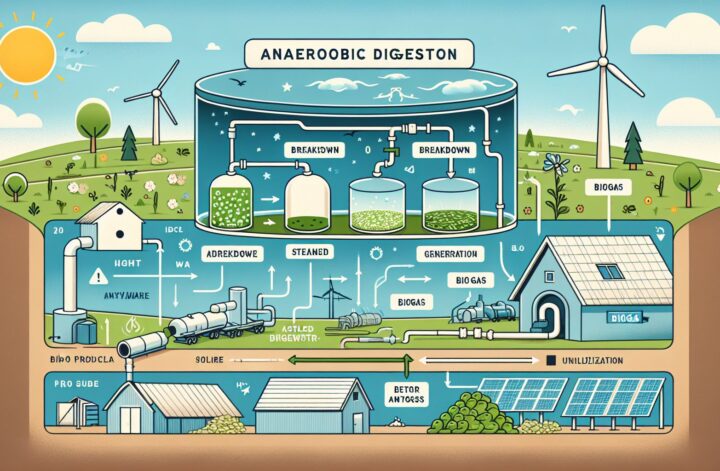With the pressing urgency of climate change affecting the globe, novel and sustainable solutions are quickly becoming necessary. Amongst the varied list of ‘keywords’ provided, we are going to delve into one concept: methane capture. Methane capture can be a critical player in curbing global warming and fostering sustainability. Throughout this article, we will explore this topic, shedding light on methane as a greenhouse gas, the means and benefits of methane capture, the role of methane digesters, and the necessity for further advancements.
What is Methane and Why is it Important?
Methane (CH4) is a potent greenhouse gas that has over 25 times the warming capacity of carbon dioxide (CO2) on a 100-year scale[^1^]. Methane is released during the production and transport of coal, oil, and natural gas. It is also emitted by livestock and other agricultural practices, as well as by the decay of organic waste in municipal solid waste landfills.
Given its high warming potential and environmental implications, the capture and utilization of methane have received global attention. Methane capture goes beyond mere waste management to an endeavour for environmental preservation and sustainability.
Methane Capture Techniques
Methane Capture involves the use of technology to intercept and contain methane emissions. These captured emissions can then be utilized as a renewable source of energy. The most common method of methane capture is in landfills and livestock operations where methane digesters are used.
-
Methane Digesters: They are designed with a system to guide the methane gas that is naturally released during the break-down of organic waste. In landfill operations, a series of pipes collects and transports methane gas to a central point where it can be processed and treated. Similarly, in livestock operations, manure is stored in a closed tank, or digester, where microorganisms break down the waste, releasing methane[^2^].
-
Methane Recovery : In the coal mining industry, methane gas is released into the air during the mining process. Advanced technologies allow for the capture and use of this gas, a process termed Coal Mine Methane Recovery. Methane can be used directly for heat or electricity or purified further for use in the natural gas pipeline.
-
Gas-to-Energy Projects: Gas-to-Energy projects involve converting landfill gas, which is about 50% methane, into a renewable source of energy for industrial, commercial, or residential use.
Economic and Environmental Implications
On both environmental and economic fronts, methane capture has high potential. It contributes to decreased greenhouse gas emissions, improved local air quality and provides a revenue stream.
Investing in methane capture and utilization technologies creates job opportunities in manufacturing, plant installation, operations and maintenance. Plus, selling the captured methane boosts local or even national economies.
From the environmental perspective, methane capture mitigates the harmful effects of methane on our climate. Since methane has a significantly greater heat capacity than CO2, diverting methane from the atmosphere effectively contributes to global warming reduction[^3^].
The Need for Further Research and Development
Although modern technology has made methane capture possible and effective, the potential for growth and optimization is immense. The relative efficiency, feasibility, and cost-effectiveness of methane capture may vary greatly depending on the source and the specific circumstances.
Methane capture projects can be challenging to implement due to variables such as climatic conditions, geographical issues, and economic factors. Therefore, continued research focused on maximizing the efficiency, accessibility, and affordability of this technology is crucial.
Additionally, public policy, financial instruments, and awareness programs can aid in strengthening the network and effectiveness of methane capture projects globally.
Conclusion
With the need for environmentally friendly solutions more pressing than ever, methane capture is a valuable tool. It is an approach that not only manages waste but also generates economic opportunities, increases energy security, and mitigates climate change. However, for this potential to be fully realized, continued dedication, research, and support from all sectors—public, private, and scientific—are essential.
[^1^]: “Understanding Global Warming Potentials” – U.S. Environmental Protection Agency. https://www.epa.gov/ghgemissions/understanding-global-warming-potentials
[^2^]: “Turning Manure into Gold” – U.S. Department of Agriculture. https://www.usda.gov/media/blog/2013/03/26/turning-manure-gold
[^3^]: “Combining methane capture and use with carbon capture and storage” – Nature Reviews Earth and Environment. https://www.nature.com/articles/s43017-020-0099-9




